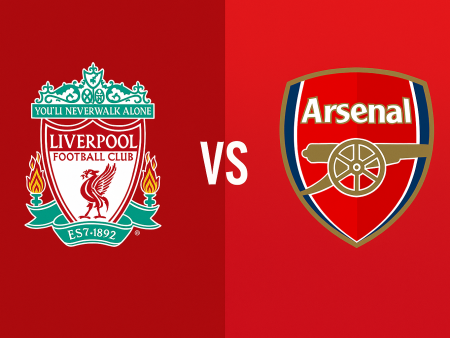Belgium’s Tactical Approach at Euro 2020: An In-Depth Analysis
Belgium entered Euro 2020 as strong contenders, positioned with Denmark, Russia, and Finland in Group B. True to expectations, Roberto Martinez’s side topped the group, winning all three matches while conceding just once. This detailed analysis explores Belgium’s tactical systems, player roles, and the strategies that shaped their group-stage dominance.
Preferred Formation and Squad Structure
Roberto Martinez has long favored a back-three setup, deploying a 3-4-2-1 formation throughout the tournament’s first phase. This system is built to revolve around Romelu Lukaku as the primary striker, enabling a mix of tactical flexibility among the squad’s wingers and wing-backs, who can interchange between wide and central roles. Such versatility is crucial, especially when responding to in-game developments or injury setbacks.
In defense, Thibaut Courtois has anchored the goal, supported by a rotating cast of experienced defenders. Jan Vertonghen and Toby Alderweireld have brought stability on the flanks of the back three, with Dedryck Boyata and Jason Denayer contending for central spots. Notably, Thomas Vermaelen has been the mainstay across all games, sometimes featuring from the bench. On the wings, Thomas Meunier and Thorgan Hazard have assumed prominent responsibilities following Timothy Castagne’s early injury.
The midfield has seen consistent rotation, with Youri Tielemans, Kevin De Bruyne, Axel Witsel, and Leander Dendoncker all featuring. Balancing creative forces such as De Bruyne and Tielemans with defensively oriented players like Dendoncker and Witsel has been key. Up front, aside from Romelu Lukaku—who has three goals and started every game—Martinez has deployed attacking options including Eden Hazard, Dries Mertens, Yannick Carrasco, and Jeremy Doku, the latter impressing with his youthful energy.
Defensive Organization and Flexibility
Belgium’s defensive philosophy prioritizes shape and patience rather than aggressive pressing. In the group stage, their out-of-possession structure often morphed to a 5-2-3 or 5-4-1. The wing-backs fall in line with the centre-backs, creating a formidable back five when required. This cautious approach minimizes risk and ensures stability even when faced with fast transitions.
Rather than engaging in high pressing, Belgium relies on maintaining control and restricting dangerous areas. They typically sit in a mid or low block, which results in few tackles and interceptions, but strengthens their overall compactness. The positional structure allows for swift defensive transitions and facilitates a quick shift to attacking play when possession is regained.
Build-Up Play and Possession Strategy
Possession and methodical build-up form the bedrock of Belgium’s tactical identity under Martinez. In the group stages, the team averaged 58% possession, ranking them among the top sides in the tournament for ball control. Their build-up usually starts from the back, with centre-backs recycling possession across a flat line rather than forming triangles, enabling safe and precise ball circulation before releasing to the midfield.
Toby Alderweireld stands out as an adept long passer, often attempting to bypass lines and find attacking runners. Within midfield, Youri Tielemans often drops deep to collect possession and progress the play, while De Bruyne brings creativity and directness with vertical passes and runs into advanced areas. The balance between creative and defensive midfield roles shifts depending on the lineup, allowing for quick adaptations based on the opponent’s approach or the match scenario.
The wing-backs, while available for support during build-up phases—especially Thorgan Hazard on the left—tend to hold advanced positions, stretching the opposition and opening passing lanes centrally. Meanwhile, Belgium’s inside forwards play narrow, frequently dropping into midfield to receive the ball and link play, creating numerical advantages and opportunities for intricate combination play.
Attacking Approach and Key Principles
Belgium’s attack is driven by the individual brilliance of players such as De Bruyne, Lukaku, and Hazard, with a significant emphasis on dribbling, close control, and intelligent movement. They favor short, quick passing interchanges and progressive dribbles through central areas rather than relying heavily on crosses or long balls.
Statistically, Belgium’s 12 dribbles per game position them near the top in the tournament, while their cautious approach means they average 10.7 shots per game—a lower tally than some eliminated teams. However, they make the most of their opportunities through patience, effective movement, and clinical finishing, as evidenced by their seven group-stage goals.
Lukaku’s role within Belgium’s system differs from his club responsibilities. He often plays with his back to goal, holding up play and allowing the likes of Hazard and De Bruyne to make penetrating runs. The attacking trio’s interplay, combined with fluid rotations among wingers and wing-backs, keeps opposition defenders unsettled and creates space in and around the penalty area.
The formation also encourages positional interchanges, with wing-backs pushing forward to provide width while the inside forwards tuck in. This allows dynamic patterns in the attacking third, enabling Belgium to tailor their approach to exploit specific defensive weaknesses.
Potential Weaknesses and Areas for Improvement
Belgium’s calculated approach in possession and defense reduces risk but can expose vulnerabilities, particularly on transitions. The advanced positioning of wing-backs and lack of outright pace among centre-backs can be exploited by teams adept at counter-attacking, as spaces open between the central defenders and flanks.
As the knockout rounds progress, opponents with greater attacking quality may force Belgium to adapt—either by increasing their pressing intensity or rebalancing midfield roles to bolster defensive security.
Summary and Outlook
Belgium’s performances in the group stage have showcased their tactical discipline, solid defensive setup, and potent attacking options. Their strong possession game and adaptive structure have delivered three wins from three matches, positioning them as serious contenders for the tournament’s deeper stages.
While questions remain regarding their ability to withstand high-quality opposition and potential defensive lapses during transitions, Belgium’s blend of experience, tactical organization, and individual flair make them one of Euro 2020’s most formidable sides. How they respond to greater challenges in the later rounds will be pivotal in their quest for European glory.









